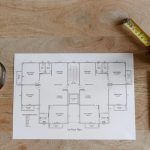You may not realize it, but VESA patterns play a crucial role in optimizing your home office setup.
Understanding these patterns is essential for achieving the ideal ergonomic arrangement for your monitors.
From choosing the right VESA mount to troubleshooting compatibility issues, mastering VESA patterns will elevate your workspace to the next level of comfort and productivity.
Let's delve into the world of VESA patterns and explore how they can significantly impact your home office setup.
Key Takeaways
- VESA patterns determine compatibility between monitors and mounting systems
- VESA compatibility expands mounting options for screens in the home office
- VESA-compatible mounts enable adjustable screen positioning for optimal viewing angles
- Understanding VESA patterns is crucial for creating a comfortable and efficient workspace
Understanding VESA Patterns
To understand VESA patterns, you'll need to know how they determine the compatibility of monitors and mounting systems in your home office setup. VESA, or the Video Electronics Standards Association, has established pattern standards to ensure that monitors can be universally compatible with VESA mounting systems. These standards dictate the arrangement of the mounting screw-holes on the back of the monitor. By adhering to these standards, manufacturers enable consumers to easily mount their monitors on VESA-compatible arms, stands, or wall mounts.
When considering VESA patterns for your home office, it's crucial to check the monitor's VESA compatibility. This involves verifying if the monitor has the standard VESA hole patterns, such as 75x75mm, 100x100mm, or others, to ensure it can be mounted.
Additionally, understanding the VESA pattern standards will help you determine the screen size restrictions for a specific VESA mount. Not all mounts can accommodate larger monitors, so being mindful of the VESA pattern and the associated screen size restrictions is vital when selecting the right mounting system for your home office setup.
Importance of VESA Compatibility
You may not realize it, but VESA compatibility can greatly expand your mounting options for screens in your home office. By ensuring your monitors are VESA compatible, you open up the possibility of using ergonomic monitor arms and stands, allowing for more flexibility in your workspace setup.
This can lead to improved comfort and reduced strain on your neck and eyes, making your home office a more comfortable and productive environment.
Mounting Options for Screens
When choosing a mounting option for your screens, it's crucial to consider the importance of VESA compatibility. Ensuring that your screen is VESA compatible opens up a world of possibilities for mounting options, providing flexibility and convenience in your home office setup.
Here are some key factors to consider:
- Screen Positioning: VESA-compatible mounts allow you to adjust the height, tilt, and swivel of your screens for optimal viewing angles.
- Cable Management: Look for mounts with integrated cable management features to keep your workspace tidy and organized.
- Desk Space: VESA-compatible mounts help free up valuable desk space, allowing for a cleaner and more efficient work area.
- Monitor Placement: With VESA compatibility, you can easily mount your screens on walls, arms, or multi-monitor stands to create a customized and ergonomic setup.
- Versatility: VESA compatibility ensures that your screens can be easily interchanged or upgraded without the need for new mounting hardware.
Ergonomic Benefits of VESA
Maximizing the ergonomic benefits of VESA compatibility in your home office setup involves adjusting your screens for optimal viewing angles and comfort. By mounting your monitors with VESA-compatible stands or arms, you can customize the height, tilt, and swivel of your screens to reduce neck strain, eye fatigue, and posture-related discomfort.
This ergonomic setup allows you to maintain a more natural and comfortable position, promoting better health and productivity during long work hours. With VESA-compatible mounts, you can easily create a multi-monitor setup that aligns with ergonomic principles, enhancing your overall workspace experience.
Investing in VESA-compatible equipment not only provides health benefits but also contributes to a more efficient and ergonomic home office environment.
VESA Pattern Measurement Guide
To ensure proper compatibility between your monitor and mounting bracket, it's essential to accurately measure your monitor's VESA pattern. Here are some installation tips to help guide you through the process:
- Use a ruler or tape measure: Measure the horizontal and vertical distances between the mounting holes on the back of your monitor to determine the VESA pattern.
- Check the VESA standard: Ensure that your measurements align with one of the standard VESA patterns such as 75×75, 100×100, 200×200, etc.
- Consider the weight and size of your monitor: Take into account the weight and size of your monitor when selecting a mounting bracket to ensure it can support your monitor safely.
- Double-check your measurements: It's crucial to re-measure the VESA pattern to avoid any errors before purchasing a mounting bracket.
- Consult the monitor's manual or manufacturer: If you're unsure about the VESA pattern or need assistance with the installation, refer to the monitor's manual or contact the manufacturer for guidance.
Accurately measuring your monitor's VESA pattern is a crucial step in ensuring a successful and secure mounting setup for your home office.
Choosing the Right VESA Mount
When choosing the right VESA mount, it's important to consider factors such as VESA mount compatibility, monitor weight capacity, and adjustability and flexibility.
These points will help ensure that your monitor is securely and comfortably positioned for your home office setup.
VESA Mount Compatibility
You should choose a VESA mount that's compatible with your monitor's VESA pattern to ensure a secure and stable setup for your home office.
When selecting a VESA mount, consider the following:
- Monitor Compatibility: Ensure the VESA mount is compatible with the size and weight of your monitor.
- VESA Pattern: Match the VESA mount's pattern to your monitor's pattern for a perfect fit.
- Adjustability: Look for a mount that offers tilt, swivel, and height adjustments to achieve the ideal ergonomic position.
- Sturdiness: Opt for a mount made of durable materials to support your monitor securely.
- Cable Management: Choose a mount with integrated cable management to keep your workspace organized and tidy.
Monitor Weight Capacity
Consider the weight capacity of your monitor when selecting a VESA mount to ensure a secure and stable home office setup. Monitor stability is crucial for preventing accidents and ensuring the longevity of your equipment. When choosing a VESA mount, it's essential to match the weight capacity of the mount with the weight of your monitor.
This ensures that the weight distribution is properly supported, reducing the risk of the monitor becoming unbalanced or falling. Be sure to check the specifications of both your monitor and the VESA mount to confirm compatibility.
Additionally, consider any future monitor upgrades and their potential weight differences when selecting a VESA mount. Prioritizing monitor stability through proper weight capacity consideration will contribute to a safe and reliable home office environment.
Adjustability and Flexibility
Selecting the right VESA mount involves assessing the adjustability and flexibility it offers for your specific home office setup. When choosing a VESA mount, consider the following:
- Height Adjustment: Look for a mount that allows you to easily adjust the height of your monitor for ergonomic viewing.
- Tilt and Swivel: Opt for a mount that provides tilt and swivel capabilities, allowing you to customize the viewing angle for maximum comfort.
- Rotation: Consider a mount that allows for easy rotation between landscape and portrait orientations to suit different tasks.
- Cable Management: Choose a mount with integrated cable management to keep your workspace organized and free from clutter.
- Compatibility: Ensure that the VESA mount is compatible with the size and weight of your monitor for secure and stable support.
VESA Patterns and Ergonomics
To achieve optimal ergonomics in your home office setup, it's crucial to ensure that your monitor is compatible with your VESA pattern. The VESA pattern of your monitor directly influences its placement and the overall ergonomic workspace. When selecting a monitor or a monitor stand, you should consider the VESA pattern to ensure that it can be easily adjusted to the proper height, tilt, and swivel angles. This is essential for reducing strain on your neck, shoulders, and eyes.
A VESA-compatible monitor allows you to position it at the optimal eye level, which helps in maintaining a healthy posture during long hours of work.
Proper monitor placement, facilitated by the VESA pattern, also contributes to reducing glare and reflections, which can cause eye strain and headaches. By being able to adjust the monitor to the ideal position, you can create a comfortable and efficient workspace that promotes productivity and minimizes the risk of discomfort or injuries.
Therefore, understanding VESA patterns and their impact on ergonomics is crucial for creating a healthy and sustainable home office environment.
Troubleshooting VESA Compatibility Issues
When troubleshooting VESA compatibility issues, ensuring that your monitor's mounting holes align with the VESA pattern of your monitor stand or mount is essential for achieving an ergonomic workspace. Adjusting the monitor to the proper height, tilt, and swivel angles can help alleviate strain on your neck, shoulders, and eyes, promoting a healthier and more comfortable work environment.
Troubleshooting VESA Compatibility Issues
- Double-Check VESA Pattern: Verify that the VESA pattern of your monitor matches the VESA pattern of your monitor stand or mount.
- Check Mounting Hole Alignment: Ensure that the mounting holes on your monitor align precisely with the corresponding holes on the mount.
- Verify Weight Capacity: Confirm that the monitor stand or mount can support the weight of your monitor.
- Inspect Cable Management: Ensure that the mounting setup allows for proper cable management to avoid clutter and potential damage to cables.
- Test Adjustability: Verify that the mount or stand allows for the necessary adjustments in height, tilt, and swivel to achieve your desired ergonomic setup.
Future Trends in VESA Standards
As VESA standards continue to evolve, you should periodically reassess your home office setup to ensure it remains compatible with the latest advancements. Staying ahead of future trends in VESA standards is crucial for maintaining a modern and efficient workspace.
One of the most prominent future trends in VESA standards is the ongoing development of higher resolution displays. As technology advancements continue, we can expect to see more widespread adoption of 8K and even 10K displays, which will necessitate VESA patterns capable of supporting these ultra-high-definition resolutions.
Another emerging trend is the increasing demand for thinner and more lightweight monitors. VESA standards are likely to evolve to accommodate the mounting of these sleeker displays, ensuring that they remain secure and stable in a variety of home office setups.
Additionally, advancements in connectivity, such as the growing prevalence of USB-C and Thunderbolt interfaces, will influence future VESA standards to provide robust support for these technologies.
Frequently Asked Questions
Can VESA Patterns Be Customized for Specific Monitor or TV Models?
Yes, you can customize VESA patterns for specific monitor or TV models to ensure monitor compatibility. This allows you to mount your display securely and in the ideal position for your home office setup.
Are There Any VESA Pattern Adapters Available for Non-Compatible Monitors or Tvs?
Yes, VESA pattern conversion adapters are available for non-compatible monitors or TVs. They can help you achieve VESA pattern compatibility by allowing you to mount your display on VESA-compatible stands or mounts.
How Do VESA Patterns Affect the Stability and Sturdiness of the Monitor or TV Mount?
VESA patterns affect the stability and sturdiness of your monitor or TV mount by providing a standardized mounting interface. This ensures mounting flexibility and ergonomic positioning, allowing for a secure and comfortable home office setup.
What Are the Most Common VESA Pattern Sizes for Different Monitor and TV Sizes?
For different monitor and TV sizes, the most common VESA pattern sizes are 75×75, 100×100, 200×200, and 400×400. Check VESA pattern compatibility to ensure your mount fits your screen perfectly. It's crucial for stability and sturdiness.
Are There Any VESA Pattern Standards for Curved or Ultra-Wide Monitors?
Yes, there are VESA pattern standards for curved or ultra-wide monitors. Check the monitor's specs for VESA pattern compatibility. Ultra-wide monitor VESA standards ensure proper mounting options, allowing you to optimize your home office setup.





